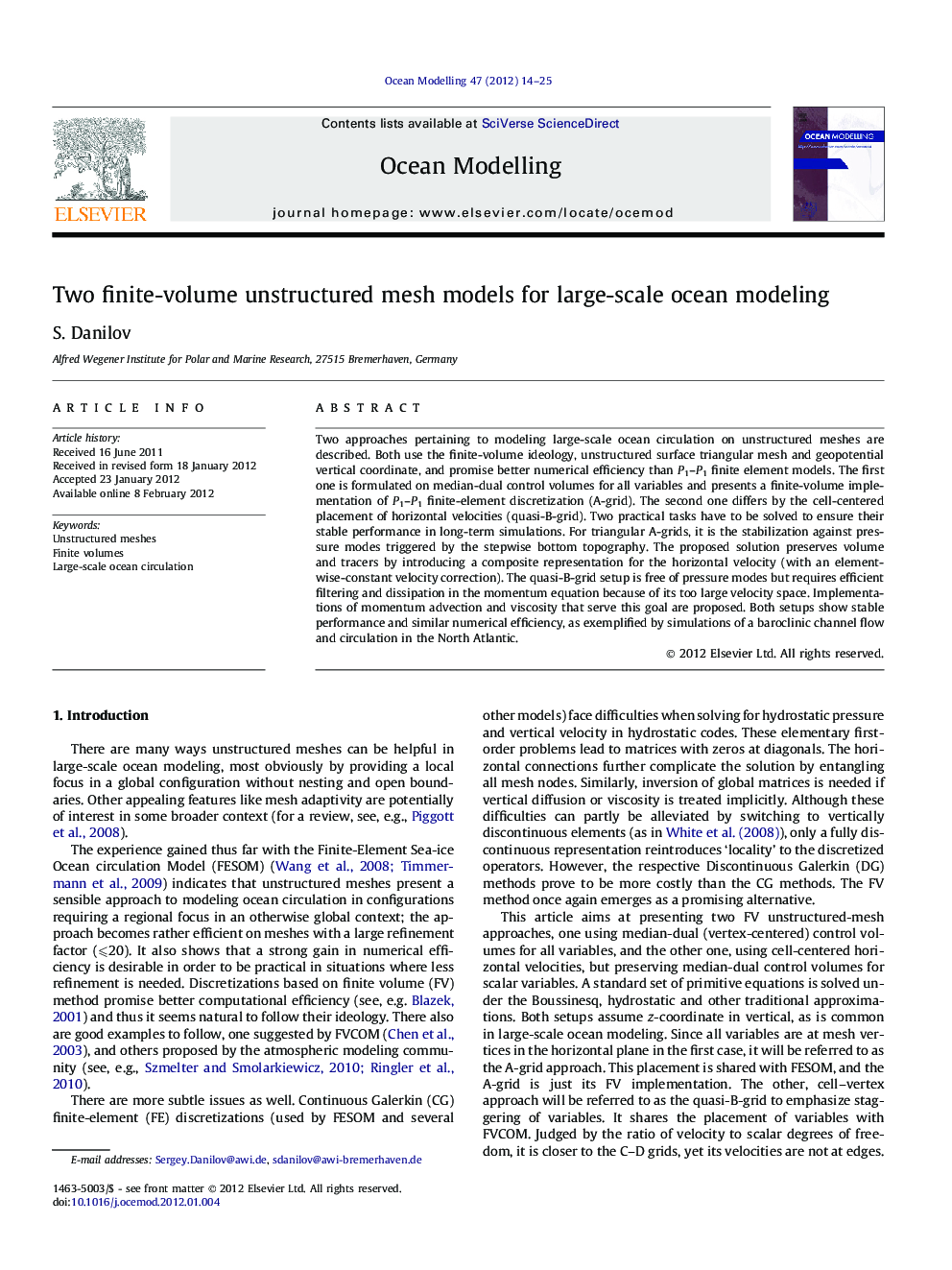| Article ID | Journal | Published Year | Pages | File Type |
|---|---|---|---|---|
| 4552224 | Ocean Modelling | 2012 | 12 Pages |
Two approaches pertaining to modeling large-scale ocean circulation on unstructured meshes are described. Both use the finite-volume ideology, unstructured surface triangular mesh and geopotential vertical coordinate, and promise better numerical efficiency than P1–P1 finite element models. The first one is formulated on median-dual control volumes for all variables and presents a finite-volume implementation of P1–P1 finite-element discretization (A-grid). The second one differs by the cell-centered placement of horizontal velocities (quasi-B-grid). Two practical tasks have to be solved to ensure their stable performance in long-term simulations. For triangular A-grids, it is the stabilization against pressure modes triggered by the stepwise bottom topography. The proposed solution preserves volume and tracers by introducing a composite representation for the horizontal velocity (with an elementwise-constant velocity correction). The quasi-B-grid setup is free of pressure modes but requires efficient filtering and dissipation in the momentum equation because of its too large velocity space. Implementations of momentum advection and viscosity that serve this goal are proposed. Both setups show stable performance and similar numerical efficiency, as exemplified by simulations of a baroclinic channel flow and circulation in the North Atlantic.
► We examine two ocean circulation models formulated on unstructured triangular meshes. ► They use median-dual or cell–median-dual finite volume discretization. ► Stabilization is proposed for the unstaggered case. ► Large velocity space requires efficient filtering of small scales in the other case. ► It is achieved through special treatment of momentum advection and viscosity.
